50 vs. 55 Inch TV: A Big Difference?
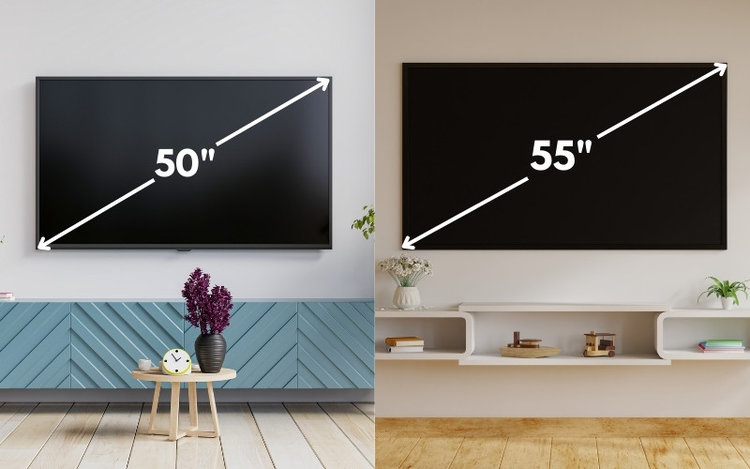
What To Know
- 55-inch TVs offer a 21% larger viewing surface than their 50-inch counterparts, adding an impressive 224.3 square inches to the display area.
- When comparing features, apps, and ports, 50 and 55-inch TVs are largely identical, with the size being the standout difference.
- Despite the size difference, the price gap is minimal. As noted in the article, there’s sometimes just a six-dollar difference between the two sizes.
You’re shopping for a new TV, and given your living room’s small size, you know you need a moderately sized TV to match. After some research, you decide that a 50 or 55-inch TV would fit your living room nicely.
However, you can’t quite figure out the difference between these two common TV sizes. Sure, the 55-inch model is a tad bigger than its 50-inch counterpart, but what else?
Believe it or not, there are several notable differences between 50 and 55-inch TVs that can impact their overall viewing experience, usability, and price point.
So, what are the differences between 50 and 55-inch TVs?
Keep reading to find out!
Quick Navigation
Quick Comparison Table
| Criteria | 50 vs. 55 Inch TV | The Winner |
| Size & Viewing Experience | 55-inch TVs offer 21% more viewing area, offering an additional 224.3 square inches of the viewing area. | 55-inch TV |
| Viewing Distance | The optimal viewing distance of the two sizes is merely the same, only about 0.7 ft different. | Tie |
| Features & Apps | Same features and apps for both sizes of the same model. | Tie |
| The Surrounding Decorations Fit | 55-inch models enhance room decor better, acting as impressive centerpieces. | 55-inch TV |
| Affordability | Minimal price difference makes 55-inch TVs a better value for their impact. | 55-inch TV |
| The Overall Winner | 55-inch TV emerges as the overall winner, offering a better blend of size, aesthetic impact, and value for a minimal difference in price and viewing distance requirements. | |
Size
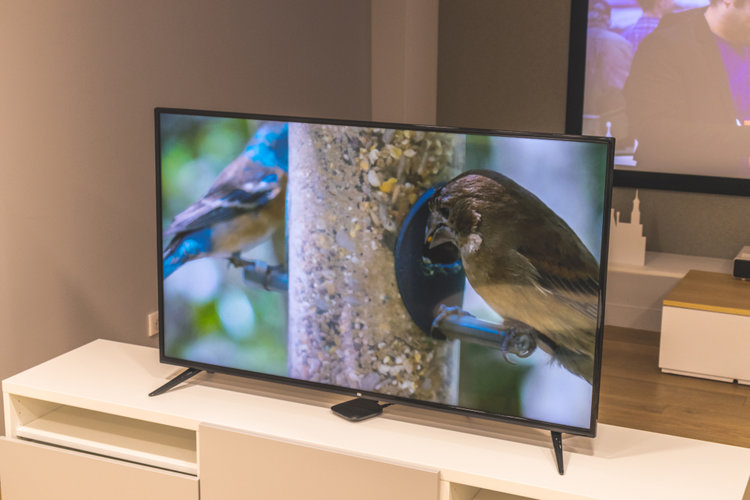
50 and 55-inch TVs’ size difference is more substantial than a measly five inches. In the table below, we’ve outlined how these two TV sizes differ in their horizontal and vertical measurements and total surface areas.
| Statistics (16×9 Aspect Ratio) | Fifty Inches (50”/127cm) | Fifty-Five Inches (55”/140cm) |
| Horizontal Measurements
(WIDTH) |
Forty-Three Inches (43.58”/100.68cm) | Forty-Seven Inches (47.94”/121.76cm) |
| Vertical Measurements
(HEIGHT) |
Twenty-Four Inches
(24.51”/62.25cm) |
Twenty-Seven Inches
(26.96”/68.48cm) |
| Total Surface Area
(SQ. INCH) |
1068.3 square inches | 1292.6 square inches |
From these measurements, we can conclude that 55-inch TVs are 4.36 inches wider and 2.45 inches taller than 50-inch models. This added width and height contribute a whopping 224.3 square inches of viewing area, which can significantly impact the way your TV looks in a room.
When you compare diagonally, a 55-inch TV is roughly 10% larger than a 50-inch TV. Conversely, a 50-inch screen is only about 9.09% smaller than a 55-inch one.
However, when comparing the overall size, a 55-inch TV is 21% larger than a 50-inch model. On the flip side, a 50-inch TV is 17.36% smaller than its 55-inch counterpart. This might surprise many consumers who assume the difference between the two is merely five inches.
Naturally, larger screen sizes will foster a more immersive and engaging viewing experience as they will occupy more of your field of view.
Viewing Distance
While larger TV screens are more immersive, you must consider their optimal viewing distance to avoid straining your neck or giving yourself a headache by watching a TV that’s too big for your space.
While 50 and 55-inch TVs differ greatly in size, their recommended viewing distances are very similar.
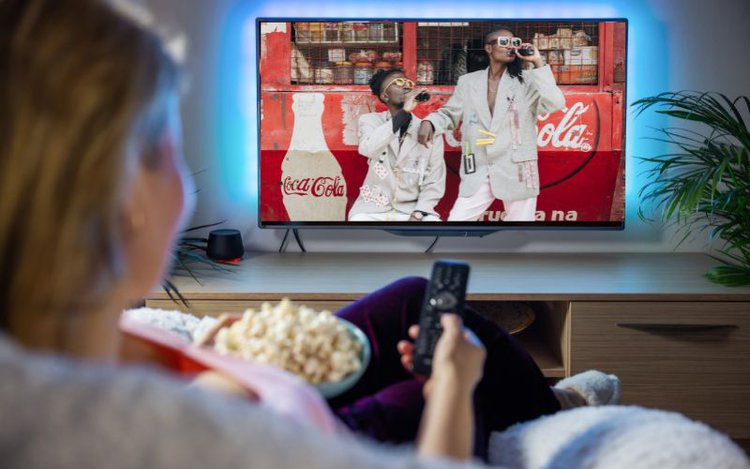
The optimal viewing distance for 50-inch TVs is seven feet, while 55-inch TVs require a 7.7-foot viewing distance. If the distance between your couch and TV stand/mount is between seven and eight feet, both 50 and 55-inch TVs will work relatively well for your space.
Since there’s only a slight difference between these two sizes’ viewing distances (0.7 feet), there’s no reason not to take your entertainment setup from good to great with a 55-inch model!
Features & Apps
A TV’s features and apps will vary widely depending on the TV brand and model. However, the units’ size will have little to no impact on these functions.
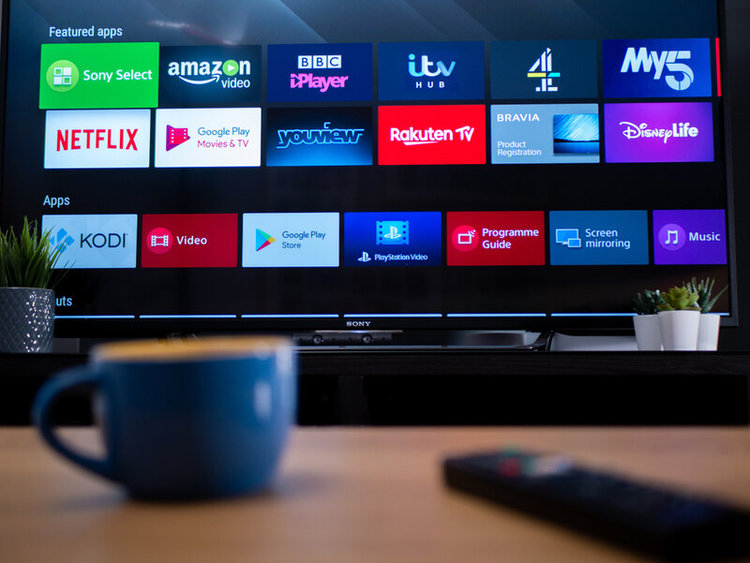
If you’re TV shopping, we recommend carefully studying the TV models’ specs to find any notable differences between them (e.g. Android/Google/Roku TV, voice command function, customization options, etc.).
Additionally, both TV sizes should boast the same number of HDMI ports, visual and audio technologies, Ethernet ports, etc.
With both TV sizes boasting the same incredible apps and features, there’s nothing holding you back from investing in an awe-worthy 55-inch TV!
The Surrounding Decorations Fit

Trust me, a 55-inch TV will definitely make your living room setup far more impressive than a 50-inch unit.
Opting for a 55-inch TV for your living room decor is not merely an upgrade; it’s a transformative choice that significantly elevates the aesthetic appeal of your space, particularly when compared to a 50-inch model.
It’s a well-known fact that we humans are often drawn to larger objects. You’ve likely heard the saying “Bigger is always better” at least once in your life.
Now, picture your TV, which should be the heart of the living room, being 17.36% smaller and failing to capture anyone’s interest. That would be quite disappointing, wouldn’t it?
The living room TV is meant to be the centerpiece that unifies the space, deserving of all the attention it can get.
Furthermore, a 55-inch TV strikes the perfect balance; it’s large enough to command attention without overshadowing other decorative elements in your room.
It’s the ideal size to draw the right amount of focus while still harmonizing with everything else in the room.
Affordability
These TV sizes come at extremely similar price points, especially given that most consumers will not perceive a notable difference between the TV.
For instance, there’s only a measly six-dollar difference between TCL Class 5-Series 50 and 55-inch (2022 model) TVs.
Given that this small upgrade can make such a big difference, why wouldn’t you want to opt for a bigger TV for your space?
43 vs. 60 Inch TVs
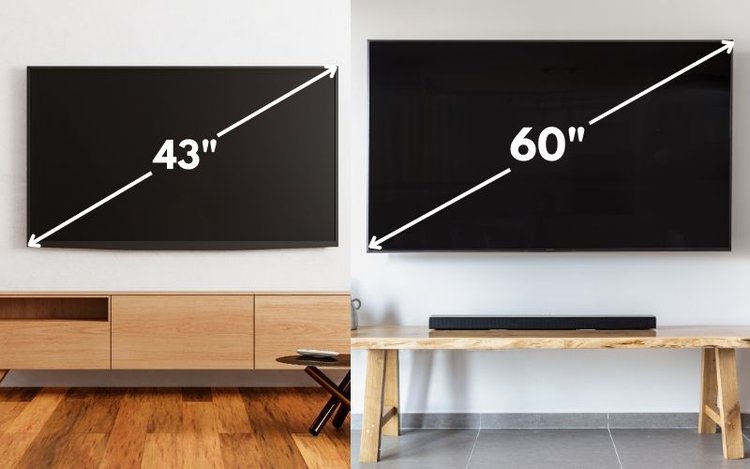
Now that we understand the fundamental differences between 50 and 55-inch TVs, let’s compare them to a few different TV sizes.
43-inch TVs are quite cheaper than their larger counterparts, with the Sony X80K Series 43-inch model retailing for $448. Meanwhile, this series’ 50-inch TVs are sold for $548 and their 55-inch TVs are sold for $598.
If you’re considering upgrading from a 43-inch TV to a 50-inch model, you’ll be paying roughly $14.2 per added square inch. Meanwhile, you’ll only pay $10 per inch if you upgrade your 50-inch TV to a 55-inch one.
While these exact values will vary depending on the TV brand and model, it’s clear that there’s usually a smaller price difference between 50 and 55-inch TVs than there is between the next smallest model and 50-inch TVs.
Now, let’s look at the next biggest TV size.
We see a similar pattern when comparing 60-inch TVs to these sizes, especially when looking at the Samsung TU7000 LED 4K UHD’s price points. This snazzy model’s 50-inch version retails for $379.99, with its 55-inch version not far ahead at $399.99.
However, you can expect a larger price difference in 60-inch units that sell for $479.99.
While you’ll only have to spend an additional $20 to upgrade your 50-inch TV to a 55-inch model, you’ll have to spend four times that amount ($80) to purchase a 60-inch TV!
Of course, if you feel that a 60-inch model will complete your space better than its smaller counterparts, you should absolutely go for it. But, if you’re unsure if a 50 or 55-inch TV will be right for you, why not splurge the extra $20 for a bigger model?
Our Verdict
Given that 55-inch TVs don’t require a significantly larger viewing distance than 50-inch models and offer a more immersive viewing experience, choosing the larger option becomes a no-brainer.
Additionally, these TVs match almost identically in price points but stand out in enhancing your living room’s aesthetic appeal.
Opting for a 55-inch TV not only promises a superior viewing experience but also elevates your space’s decor, making it the centerpiece that effortlessly commands attention without overshadowing the room’s overall design.
Therefore, for a minimal difference in cost and space requirements, a 55-inch TV is the clear winner for both the viewing experience and decorative benefits.
So, which one will it be? Did you know how different 50 and 55-inch TVs actually are?
Let us know in the comments below!
Yesenia Achlim is a technical copywriter and editor with a focus on AV equipment. She aims to break down complicated topics and make technology accessible, no matter your technical expertise. When she’s not teaching you how to replace a projector lamp, you can find her reading and baking.



Thank you so much for this in depth analysis about the 50″ and 55″ television. I really needed an expert opinion about it apart from the need to assess the space I have. I’m sure this analysis will help some more clueless ones like me 🙂
Thanks for this review, I bought a 55 inch for my sitting room, should have measured the space before I put it in. The 50 would have been safer. I know have a 55 stick in a corner.
hello this is my worry right now..i have a limited space and enough for a 50inch tv but at the same time Im thinking that its wise to get the 55in instead because it seems that there is not so much of a difference in terms of size